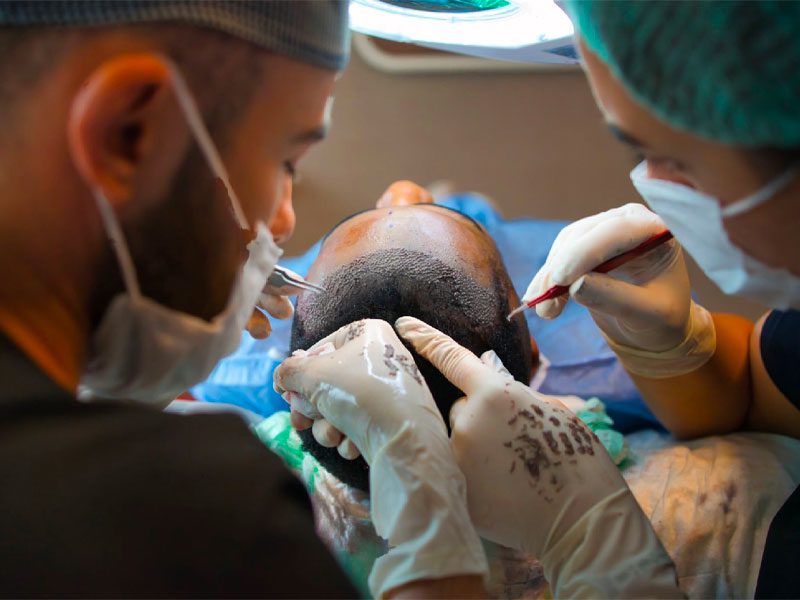PROCEDURE

Follicular Unit Transplantation (FUT)
FUT is also known as the strip method because it involves removing a strip of scalp from the donor area, usually from the back or sides of the head, where hair growth is denser and more resistant to hair loss. Here’s a detailed breakdown:
Step-by-step process:
- Preparation: Local anesthesia is administered to the donor and recipient areas.
- Removal of the strip: A strip of scalp, usually a few centimeters wide, is surgically removed from the donor area.
- Dissection: The strip is then dissected under a microscope into smaller grafts, each containing a follicular unit (a cluster of 1-4 hairs).
- Implantation: These follicular units are then carefully implanted into the recipient area, where the hair is thinning or missing.
Advantages:
- Higher graft yield: Since a strip is removed, it can typically provide a higher number of grafts in a single session.
- Less time-consuming for large areas: For patients who need more extensive coverage, FUT can be quicker compared to FUE in terms of the number of grafts achieved.
Disadvantages:
- Visible scar: The removal of a strip of scalp leaves a linear scar in the donor area. While this can be hidden with longer hair, it may be noticeable if the hair is cut very short.
- Longer recovery: The recovery time may be slightly longer compared to FUE due to the surgical incision.
- More invasive: It’s a more invasive procedure compared to FUE because it involves making a surgical incision.
Follicular Unit Extraction (FUE)
FUE is a more modern and minimally invasive method that involves extracting individual hair follicles directly from the donor area and transplanting them to the recipient area. Here's a detailed breakdown:
Step-by-step process:
- Preparation: Local anesthesia is applied to both the donor and recipient areas.
- Extraction of follicles: Using a small, round punch tool (typically ranging from 0.7mm to 1.0mm in diameter), individual hair follicles are extracted one by one from the donor area.
- Implantation: The extracted follicles are then implanted into the recipient area, following the natural direction of hair growth.
Advantages:
- No linear scar: Since no strip is removed, there’s no large, visible scar left behind, only small, dot-like scars that are much less noticeable.
- Faster recovery: The recovery time is typically shorter compared to FUT because it is less invasive, with patients often able to resume normal activities within a few days.
- More natural results: FUE tends to leave less noticeable scarring, especially if the hair is kept short.
Disadvantages:
- Longer procedure time: Since each follicle is extracted individually, FUE can be more time-consuming, particularly for large graft numbers.
- Lower graft yield in one session: Compared to FUT, FUE may provide fewer grafts in a single session, making it less ideal for patients with large bald areas.
- More expensive: The procedure often costs more due to the time-intensive nature of the process.



